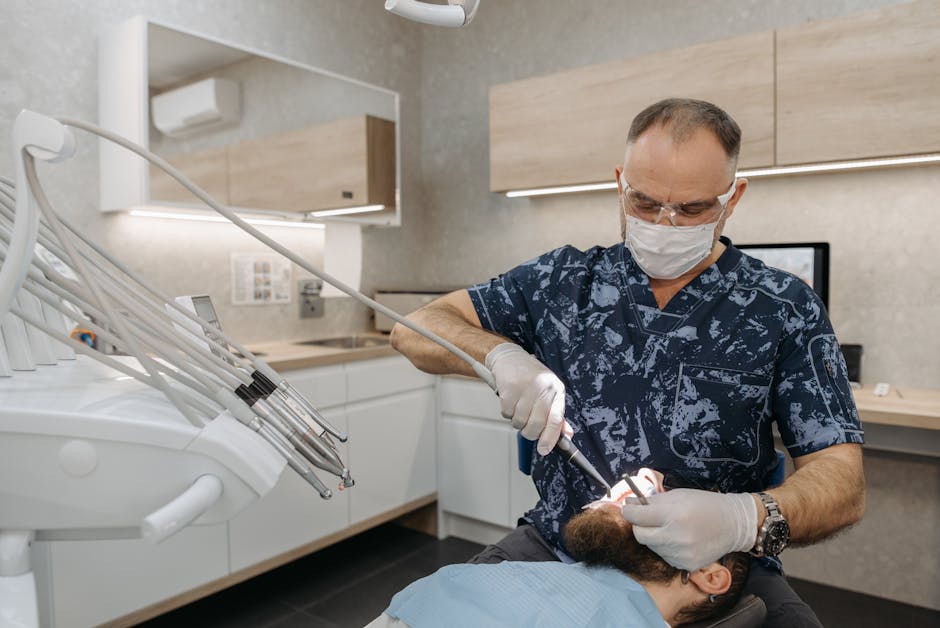Local On-Page SEO for Dentists is essential for standing out in today’s competitive dental industry. If you’re looking to attract more patients to your practice, mastering local SEO is a must.
Quick Takeaway:
1. High-quality content: Focus on creating useful content for your visitors.
2. Keyword optimization: Use relevant local keywords strategically.
3. Meta tags and descriptions: Ensure all pages have unique titles and meta descriptions.
Local SEO helps your practice appear at the top of search results when potential patients search for dentists in your area. With more people relying on search engines to find local services, optimizing your online presence is crucial. By investing in local SEO, you increase your visibility and drive more traffic to your dental practice.
Ready to dive deeper into how local on-page SEO can transform your dental practice? Let’s explore the strategies and techniques to get you there.
Understanding Local SEO for Dentists
When someone needs a dentist, they often turn to the internet for assistance. This reliance on search engines has made local search a crucial aspect of acquiring new patients for dental practices. Local search refers to the process of individuals looking for products or services within a specific geographic area, such as their city or neighborhood. When potential patients search for “dentists near me” or “dentists in [your city],” they are engaging in local search, and your practice needs to be well-positioned to capture their attention.
The Significance of Local Search
Local SEO is essential for dentists because it helps your dental practice appear in the top search results when potential patients search for dentists in your area. This is particularly important because:
- 20% of search queries are for local businesses.
- 40% of mobile searches are for local businesses.
- 97% of consumers search for local businesses online.
These statistics highlight the importance of local SEO in ensuring your dental practice is visible to potential patients who are actively searching for dental services in your area.
Google Dominance
Google is the dominant player in the local search landscape. The search engine giant has tailored its algorithms to provide users with the most relevant local results. Google My Business, Google Maps, and other Google services have become essential tools for local SEO in the dental industry. Therefore, it’s critical to understand and harness the power of Google for your practice.
Google My Business
Optimizing your Google My Business (GMB) profile is one of the most effective ways to improve your local SEO. A complete and accurate GMB profile helps your practice appear in local search results and on Google Maps. It also provides potential patients with essential information about your practice, such as your address, phone number, and hours of operation.
Google Maps
Google Maps is another crucial component of local SEO. When someone searches for a dentist, Google Maps displays a list of nearby dental practices, along with their ratings and reviews. By optimizing your GMB profile and encouraging positive reviews, you can improve your practice’s visibility on Google Maps and attract more patients.
Understanding the Local Search Landscape for Dentists
The local search landscape for dentists is a dynamic and changing field that plays a pivotal role in attracting new patients to your dental practice. In this section, we will delve into the complexities of this landscape and provide you with essential insights to help you navigate it successfully.
The Importance of Local Keywords
Using the right local keywords is crucial for improving your practice’s visibility in local search results. Keywords like “dentist near me” or “best dentist in [your city]” can help your practice appear in the top search results when potential patients are looking for dental services in your area.
Building Citations
Building citations is another important aspect of local SEO. Citations are mentions of your practice’s name, address, and phone number (NAP) on other websites, such as online directories and review sites. Consistent and accurate citations help improve your practice’s online authority and visibility in local search results.
Encouraging Reviews
Positive reviews play a significant role in local SEO. Google considers reviews as a ranking factor, and practices with higher ratings and more reviews are more likely to appear at the top of local search results. Encourage your patients to leave reviews on your GMB profile and other review sites to improve your practice’s online reputation and visibility.
Conclusion
Local SEO is a powerful tool for attracting new patients to your dental practice. By understanding the local search landscape, optimizing your Google My Business profile, using the right local keywords, building citations, and encouraging reviews, you can improve your practice’s visibility in local search results and attract more patients from your community.
Ready to dive deeper into how local on-page SEO can transform your dental practice? Let’s explore the strategies and techniques to get you there.
Keyword Research for Dental Practices
To get started with local on-page SEO for dentists, you need to understand the types of keywords that will attract the right patients to your practice. Keywords fall into two main categories: hiring intent keywords and research intent keywords. Let’s break these down.
Hiring Intent Keywords
Hiring intent keywords indicate that a searcher is looking to take action, like booking an appointment or purchasing a service. These are the most valuable keywords for your dental practice because they attract patients ready to make a decision.
For example:
- “teeth whitening dentist”
- “emergency dental care near me”
- “best orthodontist in [Your City]”
Using these keywords on your homepage and service pages can significantly boost your chances of converting searchers into patients.
Research Intent Keywords
Research intent keywords are used by people looking for information rather than immediate services. While these keywords might not convert immediately, they are still important. They can drive traffic to your site and help establish your authority in the dental field.
Examples include:
- “how to whiten teeth at home”
- “cost of dental implants”
- “benefits of electric toothbrushes”
These keywords are perfect for blog posts and FAQ pages. They help attract potential patients who are in the early stages of their decision-making process.
Keyword Tools
To find the best keywords for your dental practice, you can use several keyword research tools. Here are some of the top options:
- Google Keyword Planner: A free tool that provides keyword ideas and search volume data. Use it to find keywords specific to dental services.
- Ahrefs: Offers in-depth keyword analysis, including local search volume and competitor insights. This tool can be a bit pricey but is very comprehensive.
- SEMrush: Similar to Ahrefs, it provides detailed keyword data and competitive analysis.
- Moz Keyword Explorer: Known for its user-friendly interface, it helps you find and prioritize keywords based on metrics like “Organic CTR” and “Priority” scores.
- KeywordTool.io: Great for brainstorming a long list of potential local keywords and long-tail variations.
Pro Tips for Keyword Research
- Google Autocomplete/Related Searches: Use these built-in suggestions to find popular search terms.
- Customer Interviews: Talk to your patients about how they found your practice. The words they use are gold!
- Local Keywords: Always include location-based terms in your keywords, like “dentist in [Your City]” or “dental services in [Your Neighborhood].”
By focusing on both hiring and research intent keywords, and using the right tools, you’ll be well on your way to mastering local on-page SEO for your dental practice.
Next, let’s dive into optimizing your Google My Business Listing to further enhance your local SEO efforts.
Optimizing Your Google My Business Listing
Steps to Optimize Google My Business
Accurate Information
First things first, make sure your Google My Business (GMB) listing has accurate and up-to-date information. This includes your practice name, address, phone number, and website URL. Inaccurate information can lead to confusion and harm your online reputation. Consistency is key—ensure this information matches across all platforms.
High-Quality Imagery
Adding high-resolution photos of your dental practice, staff, and interior can make your GMB profile more appealing. High-quality imagery gives potential patients a visual sense of your practice, making it more inviting. According to research, businesses with photos receive 42% more requests for directions and 35% more click-throughs to their websites.
Category Selection
Selecting the right category for your dental practice is crucial. Choose “dentist” or “dental clinic,” depending on your services. This helps Google understand your business better and display it to the right audience. If you offer specialized services like implants or orthodontics, add those as secondary categories.
Encourage Reviews
Positive reviews can significantly boost your credibility. Actively encourage satisfied patients to leave reviews on your GMB profile. Respond to all reviews, whether positive or negative, in a professional and timely manner. Having a great review profile can convince potential patients to choose you over competitors.
Complete Profile
Fill out every field in your GMB profile, including business name, address, phone number, website, opening hours, and service descriptions. The more complete your listing, the better it will perform. A fully completed profile signals to Google that your business is trustworthy and relevant.
Business Description
Write a detailed business description that includes keywords patients may search for, like “family dentistry,” “cosmetic dentistry,” or “pediatric dentistry.” This helps Google match your listing with relevant search queries. Make sure the description is clear and easy to understand.
Verify Listing
Verifying your GMB listing confirms that you are the official owner of the business. You can do this by receiving a postcard with a PIN code or getting on a video call with Google. Verified listings are more likely to be trusted by potential customers and can access valuable data through the Google Business Profile dashboard.
Update Info
Keep your business information up-to-date. If anything changes, like your address, phone number, or opening hours, update it immediately. Regular updates help keep your listing accurate and improve your local visibility.
Use Google Posts
Google Posts allow you to share updates, promotions, events, or news about your dental practice. This keeps your profile active and engaging for visitors. For example, you can link to an offer on your website or a new blog post. Regular posts can help keep your audience informed and engaged.
By following these steps, you’ll ensure that your Google My Business listing is optimized to attract more local patients.
Next, we’ll dive into creating location-specific landing pages to further enhance your local SEO efforts.
On-Page SEO for Dental Websites
Creating Location-Specific Landing Pages
Creating location-specific landing pages is crucial for local SEO. These pages help you target patients in specific areas, making it easier for them to find you when they search for dental services nearby.
Why Location-Specific Landing Pages Matter:
– Improved Visibility: When someone searches for a dentist in their area, Google prioritizes local results. Having pages tailored to different locations increases your chances of appearing in these searches.
– Better User Experience: Patients like finding information that feels relevant to them. Location pages make your practice seem more accessible and convenient.
Steps to Create Effective Location-Specific Pages:
- Identify Key Locations: Start by identifying the areas you want to target. These could be neighborhoods, cities, or even specific landmarks.
- Use Local Keywords: Incorporate local keywords into your content. For example, “teeth whitening in Miami” or “emergency dentist in Coral Gables.” This helps search engines understand where your services are offered.
- Create Unique Content: Each location page should have unique content. Avoid duplicating information across pages. Talk about why your services are valuable in that specific area. Mention local landmarks or community events to make the content more engaging.
- Include Service Details: Detail the services you offer at each location. For instance, if you provide cosmetic dentistry, describe the specific treatments available and their benefits.
- Add Contact Information: Make sure to include your practice’s address, phone number, and a Google Map link. This makes it easy for patients to find you.
- Optimize Meta Tags and Descriptions: Ensure each page has unique title tags, meta descriptions, and H1 headers that include local keywords. This improves your chances of ranking higher in search results.
Optimizing Meta Tags and Descriptions
Meta tags and descriptions are key elements in local on-page SEO for dentists. They help search engines understand your content and attract potential patients.
Title Tags:
– What They Are: Title tags are the clickable headlines that appear in search results.
– How to Optimize: Include your primary keyword and location. For example, “Best Dentist in Miami | Your Dental Practice.” Keep it between 50-60 characters.
Meta Descriptions:
– What They Are: Meta descriptions are the short summaries under the title tag in search results.
– How to Optimize: Use this space to highlight your services and include a call to action. For example, “Looking for a reliable dentist in Miami? We offer comprehensive dental care. Call us today to schedule an appointment!” Aim for 150-160 characters.
H1 Headers:
– What They Are: H1 headers are the main headings on your web pages.
– How to Optimize: Make sure your H1 includes a relevant keyword and is descriptive. For example, “Affordable Family Dentistry in Coral Gables.”
Additional Tips:
– High-Quality Content: Ensure all your pages have high-quality, informative content. This keeps visitors on your site longer and improves your SEO.
– Internal Linking: Link to other relevant pages on your site. This helps with navigation and boosts your SEO.
– Mobile Optimization: Ensure your site is mobile-friendly. Many local searches happen on mobile devices, so a responsive design is essential.
By focusing on these elements, you can improve your local SEO and attract more patients to your dental practice.
Next, we’ll explore how leveraging online reviews can further enhance your local SEO success.
Leveraging Online Reviews for Local SEO Success
Strategies to Gather and Manage Reviews
Positive online reviews can make or break your dental practice’s online presence. They not only boost your local SEO but also build trust and credibility with potential patients.
Gathering Reviews Proactively
Don’t wait for patients to leave reviews. Be proactive!
- Ask for Reviews: After a successful appointment, ask your patients to leave a review. You can do this in person, via email, or through a follow-up text.
- Email Templates: Use simple email templates to request reviews. Here’s an example:
“If you have a moment, I’d love to get your feedback on our services. Many of our patients find us via Google. Would you please take a minute to post a review on Google? [Link to Google My Business profile]. Thanks in advance!”
- Incentives: Offer small incentives, like a discount on the next visit, to encourage patients to leave a review. Just make sure it complies with review platform guidelines.
Responding to Negative Reviews
Negative reviews happen, even to the best practices. How you handle them can make a big difference.
- Stay Professional: Always respond professionally. Thank the reviewer for their feedback and explain how you plan to address their concerns.
- Show Improvement: Use the feedback to improve your services. When potential patients see you addressing issues, it builds trust.
Monitoring Review Sites
Regularly check review platforms like Google, Facebook, and Yelp to stay on top of your online reputation.
- Claim Listings: Ensure all your listings are claimed and accurate. Unclaimed listings can hurt your local SEO.
- Respond Promptly: Respond to all reviews, both positive and negative, in a timely manner. This shows you value patient feedback.
Email Templates
Using email templates can streamline the review-gathering process.
- Review Request Link: Include a direct link to your Google My Business review page in your email signature or on appointment reminders.
- Follow-Up Emails: Send follow-up emails to patients who haven’t left a review yet. Consistent reminders can increase the number of reviews you receive.
By implementing these strategies, you can effectively gather and manage online reviews, enhancing your local SEO and attracting more patients.
Next, we’ll explore how utilizing social media can further boost your local SEO efforts.
Utilizing Social Media for Local SEO
Engaging with Your Local Community
Active Presence
Maintaining an active presence on popular social media platforms like Facebook, Instagram, and Twitter is key. Regular updates keep your audience engaged and show you are committed to their dental health.
Tip: Post at least 2-3 times a week to stay visible.
Informative Content
Share valuable content that resonates with your local audience. This can include dental tips, practice updates, and educational posts about oral health. Informative content positions you as an authority in your field and builds trust with potential patients.
- Example: Post tips on how to maintain oral hygiene during holidays or explain the benefits of regular dental check-ups.
Visual Content
Use eye-catching visuals to engage your audience. Images and videos are more likely to capture attention and are shared more often than text-only posts.
- Ideas: Share before-and-after photos of dental procedures (with patient consent), short videos on dental care tips, or infographics about common dental issues.
Local Influencers
Partnering with local influencers can expand your reach and credibility. Influencers can introduce your dental practice to a wider audience and help build trust within the community.
- Strategy: Identify local influencers who align with your practice values. Collaborate on content, promotions, or community events.
Each platform has its strengths. Utilize them effectively to reach your target audience.
- Facebook: Great for detailed posts, community engagement, and sharing updates.
- Instagram: Ideal for visual content like photos and short videos.
- Twitter: Useful for quick updates and engaging in real-time conversations.
Sharing Dental Tips
Regularly share dental tips to educate your audience. This not only helps patients maintain better oral health but also positions your practice as a helpful and knowledgeable resource.
- Content Ideas: Tips on brushing techniques, the importance of flossing, or how to handle dental emergencies.
Responding to Messages
Engage with your audience by responding promptly to messages and comments. This shows you care about their concerns and are accessible.
- Pro Tip: Aim to respond to inquiries within 24 hours to demonstrate your commitment to patient care.
By actively engaging with your local community on social media, you can boost your local SEO efforts and attract more patients to your dental practice.
Next, we’ll explore how to monitor and measure your local SEO efforts to ensure ongoing success.
Monitoring and Measuring Your Local SEO Efforts
Tools for Tracking and Analysis
Tracking and measuring your local SEO efforts is crucial to understanding what works and what needs improvement. Here are some key tools and metrics to focus on:
Tracking Keyword Rankings
Google Search Console and SEMrush are excellent tools for tracking keyword rankings. These tools show how your dental practice ranks for critical geo-modified terms like “dentists in [city]” or “dental implants [zip code].”
- Tip: Check your rankings once or twice a month to monitor progress and make necessary adjustments.
Analyzing Traffic Sources
Google Analytics helps you analyze traffic sources. This tool shows you how much of your website traffic comes from organic search, direct visits, social media, and referrals.
- Fact: As your local SEO improves, you should see a steady increase in organic traffic.
Look at the performance by city or region to understand where your visitors are coming from and how they interact with your site.
Google My Business Insights
Google My Business Insights provides valuable data on how people find and interact with your listing. You can see how many people viewed your listing, called your number, requested directions, or clicked to your website.
- Pro Tip: Higher numbers indicate that your listing optimization is driving local actions.
Google Analytics
Google Analytics is indispensable for tracking overall website traffic. You can see how much traffic you’re getting, where it’s coming from, and which pages are the most popular.
- Important: Set up Goal Tracking to measure specific actions, like appointment bookings, to understand your conversion rates.
SEMrush
SEMrush is a comprehensive tool for tracking keyword rankings, analyzing competitors, and monitoring backlinks. It also provides insights into your Google My Business rankings.
- Case Study: Many dental practices use SEMrush to identify new keyword opportunities and track their local search performance.
Review Monitoring
Monitoring reviews is essential for maintaining a positive online reputation. Tools like Whitespark and Google Alerts can help you keep track of new reviews and mentions of your practice.
- Statistic: Positive reviews can significantly impact your local SEO, as 52% of customers consider businesses with high ratings more trustworthy.
By using these tools, you can effectively monitor and measure your local SEO efforts, ensuring that your dental practice continues to attract new patients.
Next, we’ll answer some frequently asked questions about local on-page SEO for dentists.
Frequently Asked Questions about Local On-Page SEO for Dentists
How much does dental SEO cost?
The cost of dental SEO can vary widely based on several factors, including the size of your practice, the competitiveness of your local market, and the specific services you need. Generally, dental SEO services can range from $500 to $5,000 per month.
Example: A basic local visibility package might include essential services like an SEO audit, keyword research, and Google Business Profile optimization. More comprehensive packages could offer additional services like ongoing content creation, advanced technical SEO, and extensive citation building.
How do I increase my Google reviews for dentists?
Increasing your Google reviews involves several proactive strategies:
- Ask for Reviews: Encourage satisfied patients to leave a review. You can ask them in person, through follow-up emails, or by providing a review link in your email signature.
- Make It Easy: Simplify the review process by providing direct links to your Google Business Profile.
- Incentivize Reviews: Offer small incentives like discounts or entry into a raffle for those who leave a review.
- Respond to Reviews: Engage with reviewers, thanking them for positive feedback and addressing any concerns raised in negative reviews. This shows potential patients that you value feedback and are committed to improving your practice.
Statistic: According to research, 97% of consumers read online reviews for local businesses, making them a critical component of your local SEO strategy.
How do I promote my dentist on social media?
Promoting your dental practice on social media involves creating engaging and informative content that resonates with your local community. Here are some effective strategies:
- Share Dental Tips: Post helpful tips on oral hygiene, preventive care, and dental procedures. This positions you as an expert and builds trust with your audience.
- Use Visual Content: Share before-and-after photos of dental treatments (with patient consent), infographics, and videos to capture attention and provide value.
- Engage with Your Community: Respond to comments, messages, and reviews. Participate in local events and share your involvement on social media.
- Collaborate with Local Influencers: Partner with local influencers or bloggers to reach a broader audience and build credibility.
Example: A dental practice might post a weekly “Tooth Tip Tuesday” on Instagram, sharing quick tips on dental care, accompanied by appealing visuals. This not only educates followers but also keeps them engaged with your brand.
By implementing these strategies, you can effectively promote your dental practice on social media and enhance your local SEO efforts.
Next, we’ll discuss the importance of ongoing SEO efforts and the benefits of local SEO for your dental practice.
Conclusion
Importance of Ongoing SEO Efforts
SEO is not a one-time task. It’s an ongoing process that requires continuous effort and monitoring. Search engine algorithms change, and so do the trends in how people search for dental services. Regularly updating your SEO strategy ensures your dental practice stays visible and competitive.
For instance, if you stop optimizing your website, your rankings could drop, and potential patients might not find you online. Regularly adding fresh content, optimizing for new keywords, and monitoring your website’s performance are crucial parts of maintaining your local SEO success.
Benefits of Local SEO
Local SEO offers numerous benefits for dental practices. Here are a few key advantages:
- Increased Visibility: Optimizing for local search ensures your practice appears in search results when potential patients look for dental services in your area. This can significantly boost your online presence.
- Higher Quality Leads: Local SEO targets people who are actively searching for dental services near them. These leads are more likely to convert into actual patients.
- Building Trust: A well-optimized Google Business Profile with positive reviews increases trust. Patients are more likely to choose a dental practice that has good online reviews and appears reliable.
- Competitive Edge: In a crowded market, effective local SEO helps you stand out from competitors. Being visible in local searches can give you an upper hand over other dental practices in your area.
For example, according to a case study from D&D SEO Services, a dental practice saw a 540% increase in leads after implementing a comprehensive local SEO strategy.
D&D SEO Services
At D&D SEO Services, we specialize in helping dental practices master their local SEO. Our tailored strategies are designed to increase your practice’s online visibility, attract more patients, and ultimately grow your business.
We understand the unique challenges dentists face and offer a range of services to meet your specific needs. From optimizing your website and managing your Google Business Profile to leveraging online reviews and social media, we’ve got you covered.
Ready to take your dental practice to the next level? Contact us today to learn more about how our local SEO services can benefit you. Let’s make your practice the go-to choice for patients in your community!








